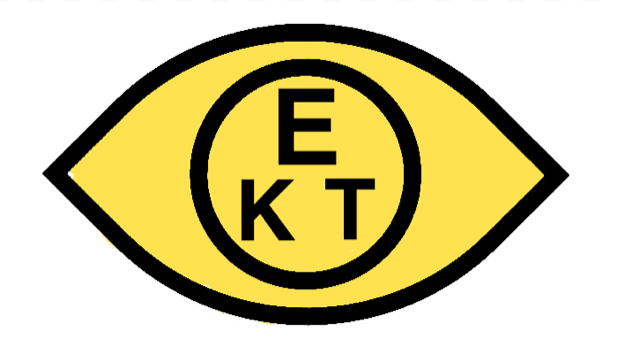
Light Sensitivity (Photophobia)/ Ocular Migraines
Light Sensitivity
What is Light Sensitivity (Photophobia)?
Light sensitivity (otherwise know as photophobia) is a symptom of light intolerance. It can involve an uncomfortable and sometimes painful feeling in response to sunlight or bright indoor lighting such as fluorescent light bulbs.
What are the common causes of Light Sensitivity (Photophobia)?:
- Dry eye
- Cataracts
- Conjunctivitis
- Eye allergies
- Macular Degeneration
- Keratitis (inflammation of the cornea)
- Uveitis (inflammation inside the eye)
- Ocular Albinism
- Damage to the retina
- Blepharospasm (a condition that makes your eyelids close uncontrollably)
There are other medical conditions that can affect your reaction to light.
What are the symptoms of Light Sensitivity (Photophobia)?:
These can vary depending on the person
- Headaches/ migraines
- Watery Eyes
- Sore Eyes
- Eye strain/ pain
- Blinking (excessively)
- Squinting
- Feeling dizzy
Symptoms can range from mild squinting to severe eye pain. Light sensitivity can be a common trigger and symptom of migraines, which can cause can nausea, eye ache and severe headache. Many migraine sufferers find that they need to recover in a dark room during an attack because of their photophobia, or from bright lights can trigger the attack.
Please Note: sudden light sensitivity can be a sign of a more serious condition such as meningitis so if you have sudden on-set symptoms you must see your GP as soon as possible.
Treatments
Light sensitivity cannot altogether be prevented but there are things you can do to help.
As many cases of light sensitivity are due to an underlying cause, you need to get to the root of the problem first.
- Book an appointment with your optometrist or GP.
- Consider an Anti-glare prescrition package. For indoors this is your best option. Our Vista Mesh Performance/ High Performance (HD) Anti-Glare Crystal Clear prescription package is great for this and what we recommend for patients for both indoors and driving at night. This is a mostly clear mid-index lens (lighter and thinner than your standard CR39). It incorporates a micro-mesh filter which acts like a polarising filter in sunglasses. The lens have been designed to align scattered reflections, dampen flicker and block electromagnetic radiation. For more information click here . Cost from £94.
- Anti-Reflective coating: Choose an Anti-Reflective coatings to help with harsh office lighting. This is part of our crystal clear coatings package which you can add to your prescription lenses.
- Dark Category Tinted lenses: we have many different types of lens category and can tint lenses down to a category 4 (which is the darkest a lens can go). This is about 5% light transmission.
- Flash Mirror Coatings: This is great for helping to reduce glare. Flash mirror coatings work by reflecting glare off the lens and away from the eye. What's great about a flash mirror coating is that unlike the full mirror coating (which you would normally see on your mirrored sunglasses) a flash mirror coating can be applied to a clear lens without darkening them. So you can use it in the office without a problem and all you would be able to see is a sheen on your otherwise clear lenses. For more info click here . Cost £60.
- Photochromic: Choosing a photochromic lens that can darken and lighten depending on the light conditions can help deal with changes in light. Prescription prices vary depending on lens index.
- Polarised Lenses: A polarised lens eliminate glare from reflective surfaces such as snow and water. Prescription prices vary depending on lens index.
- Sunglasses can be helpful but you wouldn't want to wear these indoors. You can find these on our website from £20 for a basic pair.
Ocular Migraines
What are Ocular Migraines?
Ocular Migraines are temporary visual disturbances. Although they can be alarming, they're usually nothing to worry about and symptoms will normally disappear on their own after around 30 minutes.
An ocular migraine happens when the blood flow to the eye becomes restricted due to a sudden narrowing of the blood vessels. Once the vessels relax, normal blood flow returns and symptoms clear. Usually, this will have no lasting damage to the eye.
Please note, an ocular migraine is different from the headache-type migraine with aura which usually affects both eyes. This is a separate conditions.
What are the common triggers of ocular migraines?
- Stress
- High blood pressure
- Smoking
- Certain types of contraceptives
- Exercise
- Dehydration
- Low blood sugar
- Excessive heat
- Bending over
- High Altitude
What are the symptoms of Ocular migraines?
- Partial or total loss of vision in 1 eye
- Headache - this can happen before during or after the vision attack.
- Vision MAY slowly become blurred or dimmed, there MAYBE flashes of light.
- MAY see a mosaic-like pattern of blank spots which enlarge to cause total vision loss
The same eye is affected most of the time but it is unusual for it to last longer than an hour
They're more common in women, people over 40, those with a family history of migraines or headaches and people with underlying disease like lupus, epilepsy, the hardening of the arteries and others.
Treatments/ Improvements
- Book an appointment with your optometrist or GP.
- Colour Preferencing tests: For some people with migraine's studies have shown that the frequency of headaches might be reduced with coloured lenses.
- Consider an Anti-glare prescrition package. For indoors this is your best option. Our Vista Mesh Performance/ High Performance (HD) Anti-Glare Crystal Clear prescription package is great for this and what we recommend for patients for both indoors and driving at night. This is a mostly clear mid-index lens (lighter and thinner than your standard CR39). It incorporates a micro-mesh filter which acts like a polarising filter in sunglasses. The lens have been designed to align scattered reflections, dampen flicker and block electromagnetic radiation. For more information click here .
- Anti-Reflective coating: Choose an Anti-Reflective coatings to help with harsh office lighting. This is part of our crystal clear coatings package which you can add to your prescription lenses.
- Dark Category Tinted lenses: we have many different types of lens category and can tint lenses down to a category 4 (which is the darkest a lens can go). This is about 5% light transmission. For more information click here.
- Flash Mirror Coatings: This is great for helping to reduce glare. Flash mirror coatings work by reflecting glare off the lens and away from the eye. What's great about a flash mirror coating is that unlike the full mirror coating (which you would normally see on your mirrored sunglasses) a flash mirror coating can be applied to a clear lens without darkening them. So you can use it in the office without a problem and all you would be able to see is a sheen on your otherwise clear lenses. For more info click here . Cost £60.
- Photochromic: Choosing a photochromic lens that can darken and lighten depending on the light conditions can help deal with changes in light. Prescription prices vary depending on lens index
- Polarised Lenses: A polarised lens eliminate glare from reflective surfaces such as snow and water. Prescription prices vary depending on lens index.
- Sunglasses can be helpful but you wouldn't want to wear these indoors. You can find these on our website from £20 for a basic pair.










